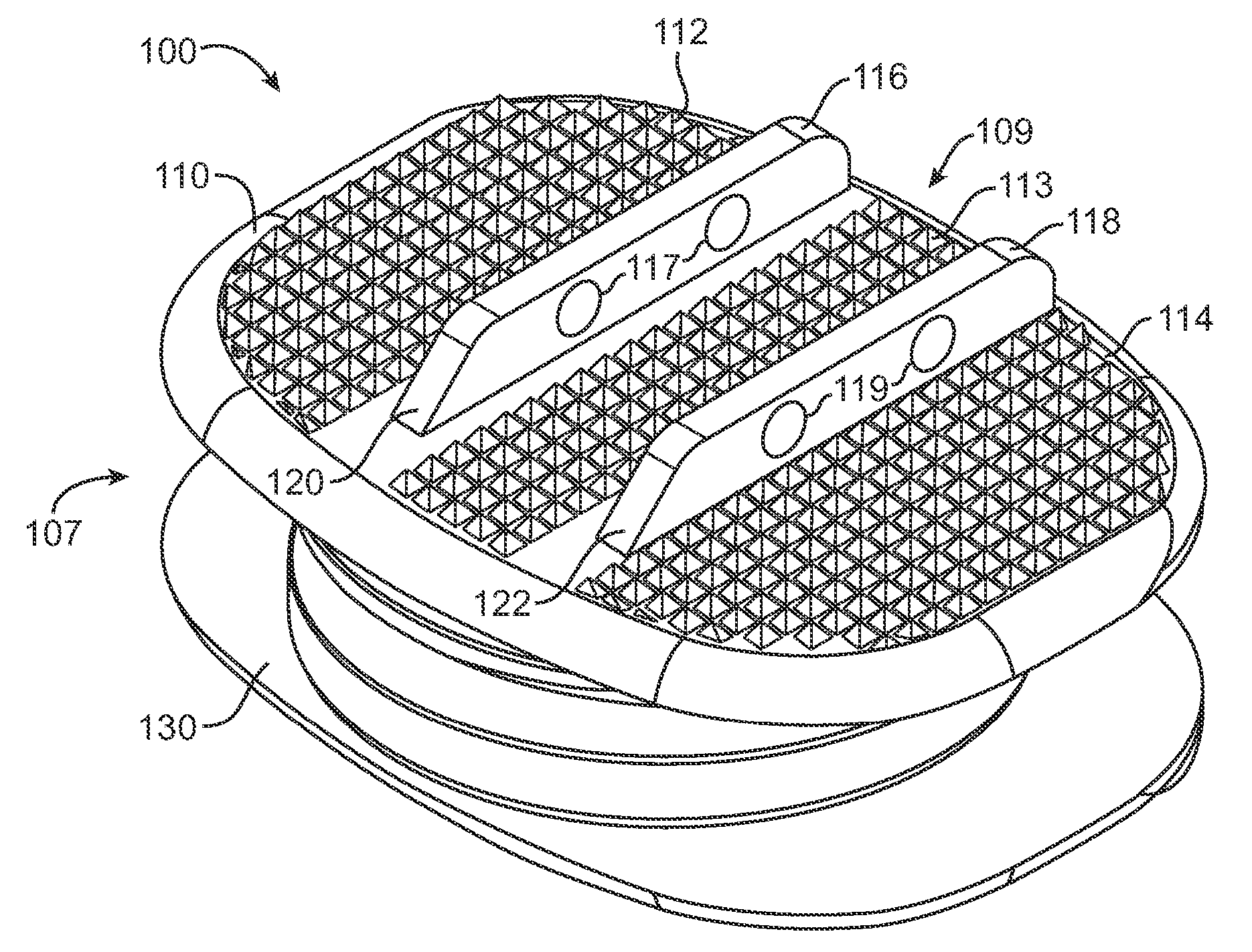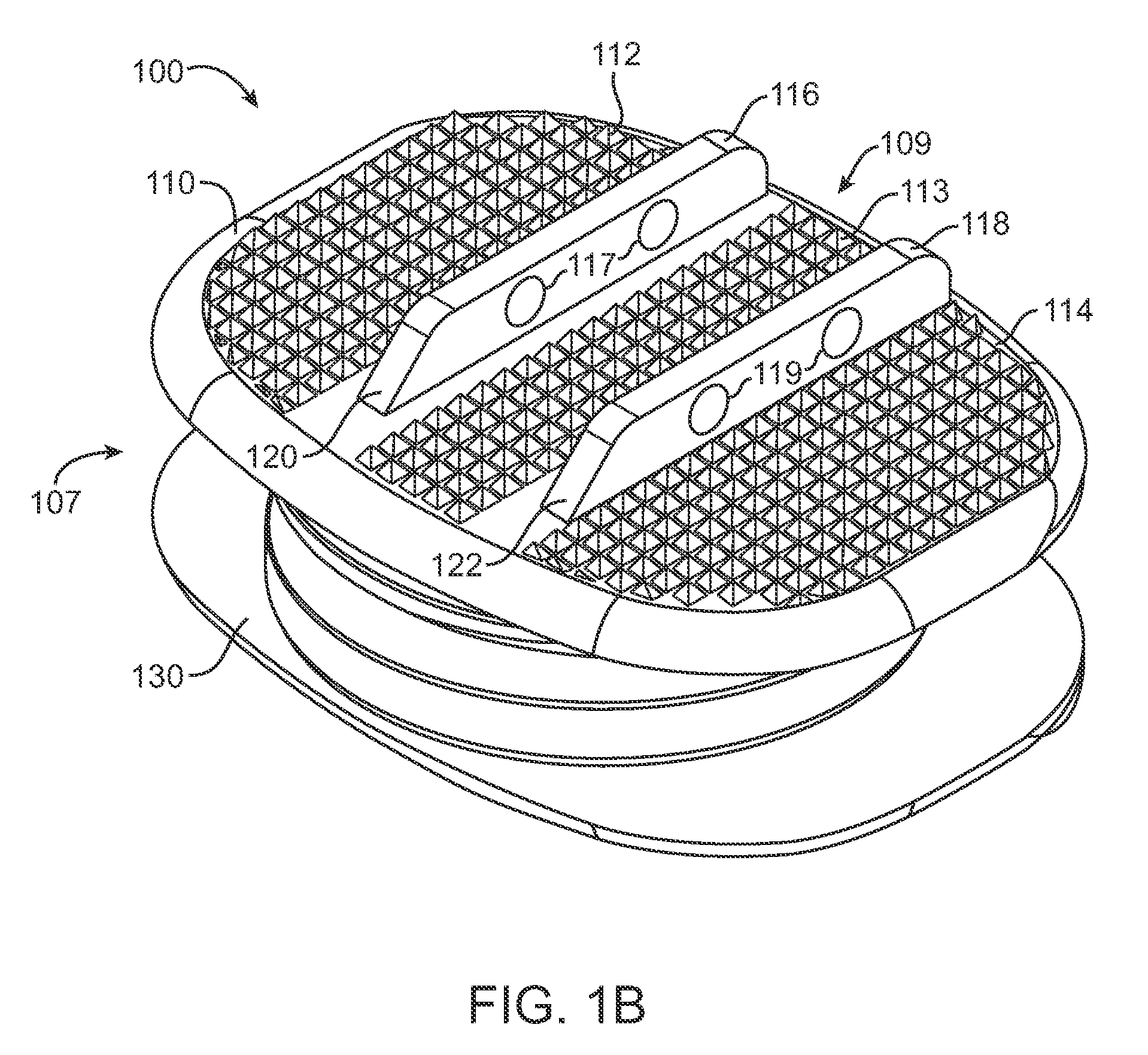Spinal Prosthesis with Offset Anchors
a prosthesis and offset anchor technology, applied in the field of spinal prosthesis with offset anchors, can solve the problems of spinal motion not being restored at the intervertebral joint, prosthesis generally does not provide a flexible joint at the damaged disc site, etc., to reduce the possibility of vertebral splitting, improve the attachment of the prosthesis, and restore motion
- Summary
- Abstract
- Description
- Claims
- Application Information
AI Technical Summary
Benefits of technology
Problems solved by technology
Method used
Image
Examples
Embodiment Construction
[0030]FIG. 1A shows an intervertebral prosthesis 100 with symmetric offset continuous anchor structures implanted between adjacent vertebrae according to an embodiment of the present invention. An upper vertebra 104, a middle vertebra 106 and a lower vertebra 108 are components of a patient spine and include midlines 105A, 105B and 105C respectively. Upper vertebra 104 and middle vertebra 106 define an intervertebral space where intervertebral prosthesis 100 is located. Intervertebral prosthesis 100 includes a midline 103 that coincides with a midline 105B of middle vertebra 106. Intervertebral prostheses 100 includes an upper component 110 that engages upper vertebra 104 and a lower component 130 that engages middle vertebra 106. Intervertebral prosthesis 100 includes an intermediate member 150, or mobile core, disposed between upper component 110 and lower component 130. Upper component 110, intermediate member 150 and lower component 130 form articulate joint so that relative mot...
PUM
 Login to View More
Login to View More Abstract
Description
Claims
Application Information
 Login to View More
Login to View More - R&D
- Intellectual Property
- Life Sciences
- Materials
- Tech Scout
- Unparalleled Data Quality
- Higher Quality Content
- 60% Fewer Hallucinations
Browse by: Latest US Patents, China's latest patents, Technical Efficacy Thesaurus, Application Domain, Technology Topic, Popular Technical Reports.
© 2025 PatSnap. All rights reserved.Legal|Privacy policy|Modern Slavery Act Transparency Statement|Sitemap|About US| Contact US: help@patsnap.com



